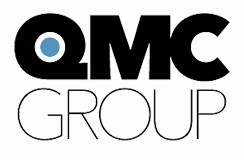I left my office to walk out to the warehouse to check on some stock. The same walk I’ve made hundreds of times. I said hello to the same faces I’d seen for years and I realized printing has a problem. There are very few young people in our shop, and even fewer of them that are ready to take a lead role in any capacity. I hadn’t thought about it that much, but in ten years time the shop is going to be in trouble. Most of the employees will be ready to retire. This made me think about our last hiring in an entry-level position. We only had one applicant. A decade ago you would have had a backlog of applications. In the current job market fewer people are seeking positions in the printing industry. As printers, what can we offer the next generation?
If you’ve been in the printing industry long enough you probably know a lot of different people. All of the connections in my network reported the same thing. The older advanced level pros out number the younger up and comers. Printing is not the only business with this problem. As the boomer generation ages, pressure will be felt in many technological/manufacturing areas. The Bureau of Labor Statistics reports that in the next 15 years 80% of workforce growth will come from those over the age of 50. By next year, 20% of the total U.S. workforce will be 55 or older. The printing industry is especially susceptible to this trend. Mergers and shop closings have not painted a rosy picture to anyone looking for a career. Part of this is self-inflicted. Long apprenticeships, inflexible schedules, and seniority only promotions deter a bright star.
Accommodate With Technology and Ergonomics
What can be done about this? First secure what is already there. We need to accommodate the experienced worker with technology and ergonomics. Press and prepress manufacturers touted how automation would reduce the experience level needed to operate new equipment. This is true, but the reality is, you need the expert’s eye to ensure quality and efficiency. The good news is that automation has made it easier for the older worker to work longer with fewer repetitive motions. As a result, there are fewer chronic injuries. Ergonomics have come a long way. The printing industry is increasing the use of technologies to reduce physical stress. Lift and stacking tables, pile turners, and fatigue mats are a few of the more common ones in use. There are packaging plants that install floor systems to move material. Automation and ergonomics help both the inexperienced worker and workers with physical challenges.
Secure a Highly Motivated Workforce
Our greatest aim is to get younger entry-level people into the printing industry. I fear that currently we are not attracting the best and brightest. How do we go about this challenge? I think a good start is a well-regulated apprenticeship and mentoring program. Ensure that new employees are hitting benchmarks required to learn the technology. Remember, knowledge is power. Be sure to give clear feedback that is both positive and negative. Be consistent. Introduce an accelerated wage program that rewards motivated employees. Making certain that they are not left on the low end for too long. Make sure they know you want them in your organization.
Retaining good employees should be management’s goal as it stands today. If that’s not possible a vibrant network is a good way to attract high-level employees. A super star that is not satisfied with their current job may use their network to seek new opportunities. Wages, vacation time, and flexible schedules are good incentives to attract new talent.
Where will we be in a decade? No one knows for sure, but when we use foresight, innovation, and flexibility, we are improving the odds that the future of the printing industry will be bright.

